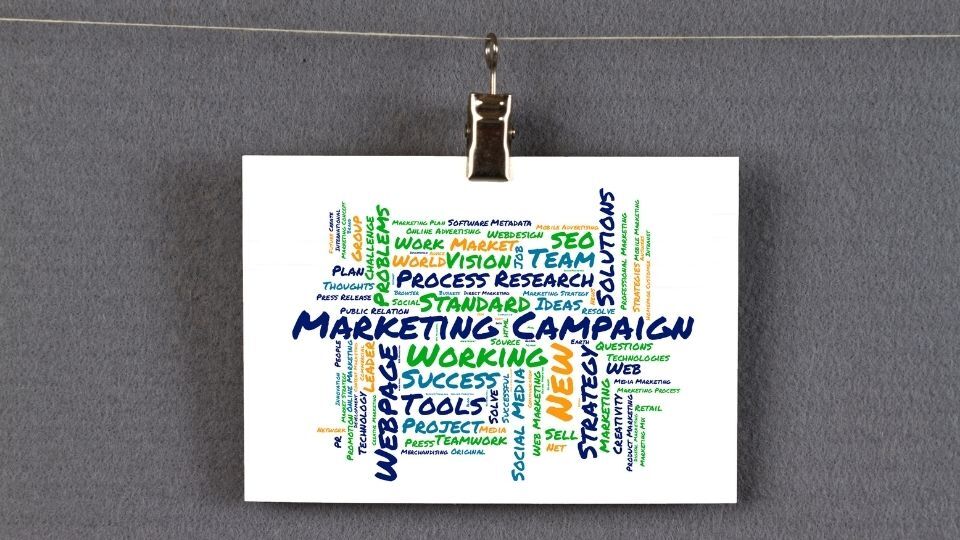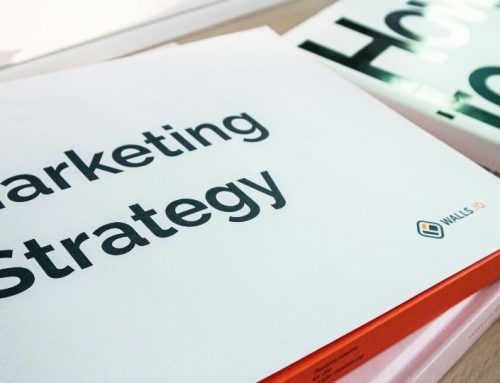An integrated marketing campaign is more than just cross-posting the same content on different platforms. It’s a structured, strategic approach where all marketing efforts—digital, traditional, and experiential—are unified under one core message. This ensures consistency, reinforces brand identity, and drives engagement across every customer touchpoint.
Today’s audiences interact with brands through multiple channels—websites, social media, search engines, mobile apps, email, and in-person experiences. A siloed or inconsistent marketing effort can create confusion, erode trust, and waste budget. An integrated marketing campaign overcomes this by synchronising messaging and creative across every channel, delivering a seamless brand experience that moves prospects from awareness to action.
When done right, integrated campaigns offer increased brand visibility, better conversion rates, and measurable ROI. They also promote internal alignment within marketing teams, enabling faster decisions and more cohesive execution.
In this blog by Smart Digitants, we’ll break down the core components of successful integrated campaigns, walk through strategic frameworks, and share industry-tested best practices to help you build campaigns that connect and convert.
What Is an Integrated Marketing Campaign?
An integrated marketing campaign is a unified approach to marketing that ensures all communications—across various channels—work together harmoniously. Instead of treating each marketing channel as a standalone effort, integration focuses on aligning creative assets, messaging, timing, and objectives to create a seamless customer journey.
At its core, an integrated campaign is built on these three principles:
1. Unified Messaging
The heart of any integrated campaign is a single, clear message that resonates with the audience. This message is adapted—not duplicated—for different formats and platforms, maintaining core consistency while allowing flexibility in tone and execution.
For instance, a product launch might carry a consistent slogan across television, social media, and email, but the way it’s presented varies to fit the medium.
2. Channel Coordination
Whether it’s paid ads, SEO content, PR events, or influencer collaborations, every touchpoint needs to be in sync. Multichannel marketing becomes effective only when each element contributes to the same overarching goal.
This coordination extends beyond marketing departments to include sales, customer support, and any team that interacts with customers. The result? A more holistic, credible, and impactful brand presence.
3. Consistent Branding
Visual identity, tone of voice, values, and storytelling elements must align across all materials. Whether a customer sees your campaign on Instagram, in a newsletter, or on a billboard, they should instantly recognise your brand and understand the message.
Inconsistent branding weakens trust. Integration reinforces it.
Why Integrated Marketing Campaigns Matter in Today’s Landscape
In a fragmented media environment, consumers are bombarded with content every second. They’re watching a YouTube ad while scrolling Instagram, checking emails during meetings, or seeing your billboard on the way to a store they already Googled. The customer journey is no longer linear—it’s a complex web of touchpoints and micro-moments.
An integrated marketing campaign cuts through this noise by creating a cohesive experience that follows the customer, not the channel. Here’s why that matters more than ever:
1. Modern Buyers Expect Seamless Experiences
Today’s consumers are savvy. They expect brands to know who they are, remember their interactions, and speak to them with relevance—whether they’re on LinkedIn or receiving a follow-up email. Integrated campaigns enable you to deliver that seamlessness.
According to Salesforce, 76% of customers expect consistent interactions across departments. That consistency starts with integrated marketing.
2. Improved ROI Through Coordination
When marketing channels are aligned, you avoid duplication, waste, and missed opportunities. An integrated campaign reduces silos, improves resource allocation, and enhances performance tracking. You spend smarter, not just bigger.
It’s about getting compounded results. A YouTube ad doesn’t just bring awareness—it amplifies the effect of the paid search campaign. The landing page doesn’t just convert—it reinforces what users saw on social media.
3. Brand Recognition and Trust
Repetition builds recognition, and recognition builds trust. When every touchpoint echoes the same theme, slogan, tone, and visual cues, audiences are more likely to remember your message—and believe it.
Integrated campaigns are especially crucial for brand-building over time. Inconsistent or conflicting messages erode credibility and make your brand forgettable.
4. Data-Driven Optimisation
An integrated approach enables unified tracking, shared KPIs, and a clearer view of customer interactions across platforms. You can attribute success more accurately, refine messaging faster, and iterate based on real-time insight.
Key Elements of a Successful Integrated Marketing Campaign
Building a cohesive and results-driven integrated marketing campaign requires more than cross-posting content. It demands a structured framework, clear goals, and strong internal alignment. Below are the core components that turn a fragmented effort into a high-performing, unified campaign.
1. Clearly Defined Objectives
Start with purpose. Are you trying to increase brand awareness, drive sales, generate leads, or change perception? Every channel, message, and metric must align with these objectives.
Without measurable goals, campaigns lose direction. Define KPIs upfront—conversion rate, engagement, reach, ROI—and ensure each team knows what success looks like.
2. Target Audience Insights
You can’t integrate what you don’t understand. Strong campaigns are built on audience research: demographics, psychographics, preferences, pain points, and behaviours across platforms.
Use tools like Google Analytics, customer surveys, and social listening to map out your ideal customer profile. This informs everything from tone of voice to channel selection.
3. Unified Messaging and Creative Theme
A consistent message binds your campaign. This could be a central slogan, a narrative thread, or a big idea that resonates across media.
From display ads to TikTok videos to press releases, every asset should echo this theme—even if the execution varies. The aim is cohesion, not carbon copies.
4. Cross-Channel Strategy
An integrated campaign thrives on channel orchestration, not isolation. Plan how each platform will contribute to the bigger picture. For example:
- Social Media – Amplifies content and engages communities
- Email Marketing – Personalised follow-ups and nurture sequences
- SEO/Content Marketing – Long-form content to inform and convert
- Paid Media – Drives targeted traffic and visibility
- Offline Media – Complements online with tangible brand exposure
- Events/Webinars – Enable deeper engagement and education
Each channel should play a defined role and interact with others—like instruments in a symphony.
5. Marketing Calendar and Timeline
Time matters. Campaigns need a clear schedule, mapping out:
- Launch dates
- Content publishing cadence
- Promotional bursts (e.g. seasonal sales)
- Cross-team handovers (e.g. from creative to digital)
This ensures momentum and keeps all moving parts synchronised.
6. Tech Stack and Integration Tools
You can’t execute integration without the right tools. Your tech stack should support:
- CRM for audience segmentation
- Marketing automation for drip campaigns and email journeys
- Project management tools for team coordination
- Analytics platforms for performance tracking
- Social scheduling tools for aligned posting
Most importantly, these tools must talk to each other—data silos destroy integration.
7. Measurement Framework
Tracking performance is non-negotiable. From UTM parameters to custom dashboards, you need to monitor progress across every channel and funnel stage.
Map performance back to original objectives. Integrated reporting reveals patterns that isolated data can’t—like how a social ad sparked email engagement or how an in-store event lifted search traffic.
Best Practices for Executing an Integrated Marketing Campaign

Having the right elements in place sets the foundation, but execution determines success. These best practices help ensure your integrated marketing campaign runs smoothly, stays on message, and delivers measurable results.
1. Start with Strategy, Not Tactics
Before jumping into ads or creative, develop a strategic campaign blueprint. Identify:
- Primary objective and KPIs
- Target personas
- Customer journey stages
- Core message
- Budget allocations
- Channel roles
Strategy drives coherence. Tactics support it.
2. Involve All Teams Early
Marketing integration isn’t just about platforms—it’s about people. Bring content, digital, PR, sales, and customer support into campaign planning from day one.
Cross-functional planning:
- Reduces duplication
- Aligns messaging across touchpoints
- Speeds up approvals
- Encourages creative synergy
The earlier the collaboration, the stronger the execution.
3. Customise Content Per Channel Without Losing Unity
Don’t blast identical content everywhere. Adapt your message for each channel’s strengths:
- LinkedIn: Thought leadership and professional tone
- Instagram: Visual storytelling
- Email: Personalisation and direct calls to action
- PPC: High-intent messaging and concise CTAs
- Blog: SEO-optimised depth and authority
The message stays consistent—the format and tone flex.
4. Maintain a Centralised Asset Repository
Avoid version confusion. Store brand guidelines, campaign assets, templates, and messaging documents in a shared location (e.g. Google Drive, SharePoint, or a DAM system).
This allows every team to access up-to-date material and ensures brand fidelity.
5. Use Sequencing for Storytelling
Don’t just repeat your message—build it over time.
Plan content sequencing where each stage deepens engagement:
- Awareness: Bold headlines, teaser videos, social hooks
- Consideration: Case studies, comparisons, webinars
- Conversion: Discounts, demos, free trials, urgency triggers
- Loyalty: Thank-you emails, retention content, referral incentives
Each step nudges the customer further down the funnel with strategic intent.
6. Integrate Data Streams for Unified Reporting
Use tools like Google Tag Manager, CRM integrations, and UTM tracking to centralise campaign data. Then build dashboards (e.g. in Looker Studio or HubSpot) that:
- Compare performance by channel
- Attribute lead/conversion sources
- Highlight ROI across platforms
- Reveal customer journey trends
Integrated insight fuels better decisions and smarter scaling.
7. Test, Learn, Optimise
Even the best-planned campaigns evolve. Adopt a test-and-learn mindset:
- A/B test creative, CTAs, subject lines, targeting
- Monitor channel-specific metrics in real time
- Adjust spend and messaging based on early results
- Document findings for future campaigns
Don’t run on autopilot—fine-tune constantly.
8. Ensure Mobile Responsiveness Across Assets
A unified experience isn’t unified if it breaks on mobile. Ensure every asset—emails, landing pages, ads, and forms—is fully responsive.
Mobile optimisation is not optional. It’s core to campaign integrity.
9. Align Paid and Organic Efforts
Paid media fuels reach. Organic builds depth. Together, they multiply impact.
Coordinate campaigns so that:
- Organic posts reinforce paid messages
- Paid ads amplify high-performing content
- SEO supports long-tail lead capture
- Influencer content aligns with brand tone
A connected ecosystem boosts discoverability and conversion.
10. Debrief and Document
After the campaign wraps, host a full debrief:
- What worked?
- What missed?
- What surprised you?
- What should change next time?
Document learnings to build a campaign playbook. Integrated marketing thrives on repeatable excellence.
Common Mistakes to Avoid in Integrated Campaigns
Even with a sound plan, many integrated marketing campaigns fall short due to overlooked gaps or flawed execution. Here are some of the most common mistakes and how to steer clear of them:
1. Confusing Consistency with Repetition
Too often, marketers think integration means pushing the exact same message across every channel. This leads to audience fatigue and missed contextual opportunities.
What to do instead: Keep the core message consistent, but tailor the delivery to suit the medium and audience behaviour on each platform.
2. Working in Silos
If content, social, paid media, and email teams operate independently, the campaign quickly fractures. Messages get out of sync, launch dates misalign, and the overall experience feels disjointed.
What to do instead: Build cross-functional teams around the campaign, with clear roles and regular syncs. Use shared project management tools to maintain visibility.
3. Failing to Plan for Attribution
If you can’t accurately track where results are coming from, you can’t optimise effectively. Many marketers launch integrated campaigns without setting up robust tracking first.
What to do instead: Before launch, define your attribution model, set up UTM parameters, integrate your CRM, and ensure every channel has tracking mechanisms in place.
4. Ignoring Offline Channels
Some campaigns lean too heavily on digital and neglect offline opportunities—events, direct mail, point-of-sale displays, or print media—that still play a critical role in multichannel strategy.
What to do instead: Consider where your audience spends time beyond the screen, and make offline channels part of your ecosystem.
5. Underestimating Internal Buy-In
If sales or customer service aren’t briefed on your campaign, they can derail it unintentionally—with inconsistent messaging, outdated info, or missed follow-up opportunities.
What to do instead: Provide internal training or toolkits before launch. Everyone facing the customer should be equipped to reinforce the campaign narrative.
6. Focusing Too Narrowly on One Funnel Stage
Campaigns often pour all their energy into top-of-funnel awareness but leave prospects stranded without mid- or bottom-funnel content to keep them engaged.
What to do instead: Map your content and channels to the entire customer journey, ensuring touchpoints at every stage—awareness, consideration, decision, and retention.
7. Lack of Post-Campaign Analysis
Many teams move on to the next project without properly evaluating what just happened. Without analysis, mistakes are repeated and wins go undocumented.
What to do instead: Schedule a formal review. Break down performance across channels, compare results to goals, and create a structured learnings doc.
Frequently Asked Questions
1. What is an integrated marketing campaign in simple terms?
An integrated marketing campaign is a coordinated effort where a brand delivers a consistent message across multiple marketing channels, such as social media, email, print, SEO, events, and paid ads. The key goal is to create a unified experience for the audience, regardless of how or where they engage with the brand.
This approach increases message retention, strengthens brand recognition, and ensures marketing efforts reinforce one another rather than compete.
2. Why is an integrated marketing campaign more effective than single-channel marketing?
An integrated marketing campaign leverages the strengths of multiple channels, reaching audiences at different stages of their journey and in various contexts. While single-channel efforts risk being siloed and less impactful, integrated campaigns ensure:
- Broader reach
- More touchpoints
- Consistent storytelling
- Improved ROI through synergy
It’s not just about more exposure—it’s about smarter, aligned exposure.
3. What are the essential components of an integrated marketing campaign?
Every effective integrated marketing campaign includes:
- A clear, measurable goal (e.g. brand awareness, lead generation)
- Defined target audience personas
- A core campaign message or theme
- Cross-channel content strategy
- Cohesive visual and verbal branding
- An execution timeline
- Performance tracking and analytics tools
These components ensure all moving parts work together, not in isolation.
4. How do I ensure consistency in an integrated marketing campaign?
Consistency in an integrated marketing campaign comes from:
- Documented brand guidelines
- A centralised creative theme or campaign idea
- Shared access to campaign assets
- Regular cross-team communication
- A content calendar that spans all platforms
Maintaining a single source of truth for assets and messaging helps prevent off-brand deviations.
5. How do I measure the success of an integrated marketing campaign?
To measure success, track both channel-specific and cross-channel metrics. Key performance indicators might include:
- Campaign reach and impressions
- Engagement rate (clicks, shares, comments)
- Lead generation or form submissions
- Conversion rates by channel
- Revenue attribution
- Customer journey paths
Using unified dashboards or CRM-integrated tools allows for a complete view of your integrated marketing campaign performance.To gain deeper insights into how cutting-edge predictive analytics is transforming digital marketing strategies and boosting campaign effectiveness, check out our blog, “How Predictive Analytics is Shaping Digital Marketing Campaigns.”
6. How do integrated marketing campaigns support brand building?
Because an integrated marketing campaign delivers a consistent message across touchpoints, it reinforces brand identity and improves memorability. Over time, this repetition builds trust and recognition—essential ingredients for long-term brand equity.
Consumers are more likely to recall and prefer a brand that speaks to them consistently, no matter the channel.
7. Can small businesses run integrated marketing campaigns effectively?
Yes. An integrated marketing campaign doesn’t have to be expensive or complex. Small businesses can integrate:
- Email and social media posts
- Print flyers with digital landing pages
- Local events promoted through online ads
- Blog content shared across channels
What matters is cohesion—not budget size. Even a modest campaign can deliver outsized results when channels are coordinated around a clear message.
8. How often should I run integrated marketing campaigns?
There’s no set frequency, but an integrated marketing campaign is typically used for:
- Product launches
- Seasonal promotions
- Brand repositioning
- Major events or announcements
- Lead generation pushes
That said, elements of integration—like unified messaging and cross-channel planning—should be part of your ongoing marketing strategy plan, not just major campaigns.
9. What tools help manage integrated marketing campaigns?
To streamline your integrated marketing campaign, consider tools for:
- Project management: Asana, Monday.com, Trello
- Asset management: Canva Teams, Adobe Experience Manager, Bynder
- Marketing automation: HubSpot, Mailchimp, ActiveCampaign
- Social scheduling: Buffer, Hootsuite, Sprout Social
- Analytics: Google Analytics 4, Looker Studio, SEMrush
The more connected your tools are, the more effectively you can manage integration.
10. What’s the difference between multichannel and integrated marketing?
Multichannel marketing means using more than one channel. However, it doesn’t guarantee coordination. Each channel might operate in its own silo with different messaging.
An integrated marketing campaign, on the other hand, ensures those channels are connected, working in sync to deliver a unified brand experience. Integration is about alignment, not just presence.
Ready to Launch Your Integrated Marketing Campaign?
Whether you’re planning a full-scale product launch or refining your multichannel approach, the success of your integrated marketing campaign depends on precision, planning, and consistency.
At Smart Digitants, we specialise in crafting data-driven, high-impact campaigns that connect every channel and message into one powerful brand story. From strategy to execution to analytics—we help brands stay aligned, visible, and competitive.
Let’s build a campaign that delivers results.
Our Content Writing Team at Smart Digitants is a group of dedicated professionals, passionate about creating high-quality, engaging content.










